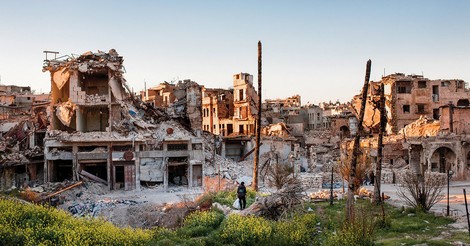Your podcast discovery platform
Curious minds select the most fascinating podcasts from around the world. Discover hand-piqd audio recommendations on your favorite topics.

piqer for: Globalization and politics Global finds
I am an Australian freelance journalist focussing on conflicts, politics, and warzones around the world. I have been working as a journalist for over 5 years, having reported from Australia, Germany, China, Egypt, Palestine, and Ukraine. I am especially interested in the way that new technologies are being used in conflict zones in unexpected and often disturbing ways. During my time working as a journalist, I also co-founded open-source war reporting site Conflict News.
Aleppo After the Fall
Aleppo, in 2011, was Syria's largest city. Filled with a growing middle class and a rich cultural and architectural heritage, the city was a must-see for tourists visiting the region.
But now, in 2017, it is little more than a shadow of its former self.
Following years of fighting, Aleppo was retaken by Syrian government forces loyal to President Assad last year. This battle, combined with years of Syrian and Russian bombardment, turned much of the city, including some of its most famous sites, into rubble. Worse still, the human cost of the fighting extended into tens of thousands dead and hundreds of thousands forced to flee for their lives.
As someone who has been reporting on the war in Syria for several years now, the story of Aleppo, and the wider descent of Syria into fratricidal civil war, is one I know well. But rarely does an article capture the human dimension of the conflict as well as this piece by Robert F. Worth writing for The New York Times.
Based on interviews conducted with civilians following the recapture of the city by the government, his article shows how no matter what side of the conflict they ideologically supported, they nonetheless suffered immensely. Moreover, he illustrates how the revolution lost its way, beset by ideological divisions and a growing disdain for the civilians they allegedly fought for.
He also tries to find evidence of war crimes committed by government forces in Aleppo, despite often being shadowed by minders who would intimidate interview subjects. Nonetheless, this article perhaps is too broad with the equivalencies it draws between the two sides, and could spend more time breaking down who was responsible for most of the death and destruction within the city.
Of course, both sides of the story need to be told, and this article is incredibly insightful in showing a perspective usually missed in the reporting of this war: that of the civilians trapped in it.
